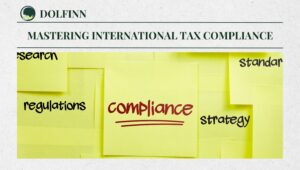
Understanding ASC 842 and Its Impact on Lease Accounting
ASC 842, the Accounting Standards Codification (ASC) 842, issued by the Financial Accounting Standards Board (FASB), aimed to provide greater transparency in lease reporting by lessees. The main change under ASC 842 is that lessees must now recognize nearly all leases on the balance sheet. This includes the right-of-use (ROU) asset and a corresponding lease liability. While this change was expected to bring more clarity to financial statements, the real challenge lies in how economic factors shape the application of these standards, especially in commercial real estate.
Economic Factors Shaping Lease Accounting Under ASC 842
The Macroeconomic Landscape and Rising Capital Costs
The macroeconomic environment is one of the most significant influencers of lease accounting. For instance, the U.S. 30-year fixed mortgage rate has surged since 2016, nearly doubling, which directly affects the commercial real estate sector. Higher interest rates not only lead to increased capital costs but also change the financial dynamics for lease agreements. Real estate entities are now facing higher borrowing costs and tighter lending conditions, which influence the value of assets and liabilities recognized under ASC 842.
Additionally, rising costs of capital and maturing debts have put many commercial real estate entities on the defensive. With the current tightening of lending standards, fewer real estate transactions are taking place, leaving entities with fewer options to restructure or refinance existing leases. Entities need to stay proactive in adjusting their lease-related accounting and reporting to reflect these macroeconomic shifts.
Example: A commercial office building in New York, for instance, may find its lease agreements’ financial terms adversely impacted by rising interest rates. With the increasing mortgage rates, the cost of financing new leases or refinancing current leases becomes more expensive, directly impacting the way these leases are accounted for under ASC 842.
Real Estate Rationalization and the Changing Workplace Landscape
The COVID-19 pandemic sparked a shift in how businesses operate and reassess their need for physical real estate assets. Many companies, realizing the viability of remote work, have started evaluating whether they still need as much office space as they did before. This phenomenon, known as “real estate rationalization,” is another crucial factor affecting lease accounting under ASC 842.
Companies across various industries are now more focused on right-sizing their real estate portfolios. As part of this process, businesses are engaging in lease modifications, subleasing unused spaces, or abandoning properties altogether. These actions can lead to changes in lease terms, impairments, and abandonment accounting, all of which need to be properly evaluated under ASC 842.
Example: A tech company based in San Francisco may decide to reduce its office footprint by subleasing half of its leased space to another business. This decision will necessitate careful evaluation of the lease term and potential modifications, considering how these changes impact the lessee’s balance sheet under ASC 842.
Hot Topics in Lease Accounting for ASC 842 Adopters
Impairment and Abandonment of Leased Properties
The accounting for impairment and abandonment of leased properties has gained more attention with the evolving macroeconomic and business landscape. Under ASC 842, ROU assets are subject to the impairment rules outlined in ASC 360-10, which applies to long-lived assets. If circumstances indicate that the carrying amount of an asset may not be recoverable, entities must test for impairment.
A change in the use of a leased property can trigger an impairment test. For example, if a company no longer needs a leased property for its business operations but still has an ongoing lease obligation, it must assess whether the ROU asset is impaired or if abandonment accounting applies.
Pitfall: Companies may mistakenly assume they are abandoning a property when they are temporarily idling it or still using it for minimal operations. Abandonment accounting is only applicable if the property is no longer used for any business purposes, including storage. Any ambiguity around abandonment requires significant judgment based on factors such as the remaining lease term, the property’s marketability, and management’s intention to sublease the space.
Lease Modifications and Their Implications
The current economic uncertainty has led many tenants to negotiate lease modifications with landlords. These modifications might involve reducing leased space, shortening lease terms, or even early termination of leases. Under ASC 842, the accounting treatment for lease modifications depends on whether the modification creates a new lease or is considered part of the original lease.
Pitfall: A common mistake is classifying a lease amendment as a full termination when it is merely a reduction in leased space. If the lease is not immediately vacated, the modification may result in a reduced lease term rather than a complete termination. Proper classification ensures that the lease modification is accurately reflected in financial reporting.
Example: A business that leases a retail space in a mall may find itself needing to reduce its leased area due to lower foot traffic. If the space is reduced without immediate termination, the accounting would reflect a modification, not a termination, adjusting the lease liability and ROU asset accordingly.
Subleases and Sale-and-Leaseback Transactions
Subleases and sale-and-leaseback transactions have become more common in today’s uncertain real estate market. A sublease occurs when a lessee leases out an asset to a third party while maintaining the original lease agreement with the lessor. ASC 842 requires lessees to account for both the head lease and sublease separately.
Similarly, sale-and-leaseback transactions, where an entity sells its property and leases it back, are often used as financing tools. These transactions must be carefully analyzed to determine whether the sale qualifies for derecognition and whether the leaseback should be classified as an operating lease or a finance lease.
Evaluating Lease Term Options and Their Impact
At the inception of a lease, entities must evaluate the lease term, including non-cancelable periods and options for renewal or termination. This evaluation is crucial, as changes in the macroeconomic environment—such as fluctuating rental rates or shifts in business operations—can affect the likelihood of exercising these options. For instance, an entity may initially evaluate the likelihood of renewing a lease, but changes in market conditions may lead to a reassessment.
Ongoing Adjustments and Lease Collectability Assessments
Entities must regularly review and assess lease collectability, especially for lessors, under ASC 842-30. The collectability model is based on the risk of default by lessees, which must be regularly reassessed, particularly in volatile markets. In periods of economic uncertainty, lessees’ ability to meet lease payments may be jeopardized, prompting entities to adjust their accounting methods.
The Financial Accounting Standards Board (FASB) has also made adjustments to ASC 842 to address specific situations, such as related-party transactions and leasehold improvements within common-control arrangements. These changes provide more flexibility for non-public entities and not-for-profit organizations in applying the standard.
Conclusion:
As the real estate market continues to evolve under the influence of macroeconomic factors, entities must remain vigilant in monitoring and adjusting their lease-related accounting and reporting. ASC 842 has introduced significant changes to lease accounting, and the current economic landscape only adds complexity to these challenges.
From real estate rationalization to lease modifications and impairment evaluations, businesses must proactively address these factors to ensure compliance and financial accuracy. Continually assessing the impact of these evolving trends and accounting for leases accurately will not only help businesses stay compliant but also ensure more robust financial reporting in the long term.
Frequently Asked Questions (FAQs)
1. What is ASC 842?
ASC 842 is the accounting standard that governs lease accounting. It requires lessees to recognize nearly all leases on the balance sheet, with the recognition of a right-of-use (ROU) asset and a corresponding lease liability.
2. How do macroeconomic factors influence lease accounting?
Macroeconomic factors, such as rising interest rates, changes in rental markets, and shifts in business operations (like hybrid work models), impact lease terms, valuation of assets and liabilities, and overall financial reporting under ASC 842.
3. What is a lease modification under ASC 842?
A lease modification is a change to the terms of an existing lease agreement. It could involve changes such as reducing the leased space, altering the lease term, or early termination. The accounting treatment depends on whether the modification is accounted for as a separate contract.
4. What is the significance of impairment and abandonment in lease accounting?
When a leased property is no longer used for business purposes, it may trigger impairment or abandonment accounting. Under ASC 842, entities must assess whether the carrying value of the right-of-use asset is recoverable or if it needs to be written off.
5. How does a sublease impact lease accounting?
A sublease occurs when a lessee leases out the leased property to a third party. ASC 842 requires separate accounting for the head lease and sublease, and the terms of the sublease may impact the original lease’s liability and asset recognition.
Summary
ASC 842 Lease Accounting brings significant changes to how leases are reported, requiring careful attention to lease modifications, impairment, and real estate rationalization. This blog explores the challenges companies face in staying compliant and adjusting to macroeconomic shifts.
Latest Posts
- Top Cash Flow Forecasting Tools You Can’t Ignore for Global Businesses

- Mastering Profit vs. Cash Flow: 5 Key Strategies for Financial Success

- 5 Key Advantages and Disadvantages of Outsourced Accounting: Is Outsourced Accounting Worth the Risk?

- Mastering Cash Flow Management in 2025: 7 Proven Strategies for Financial Success

- Mastering International Tax Compliance: 7 Crucial Strategies for Multinational Success

- 5 Common Bookkeeping Mistakes Small Businesses Make and How to Avoid Them

